Judge Roy Bean once fined a dead man $40, the exact amount of money in his pockets, and used it to for his casket, headstone, and a grave digger. He kept a bear chained behind his saloon and prisoners chained in front of it. Roy Bean, the self-styled ‘Law West of the Pecos’ was a larger than life personality from the Old West, the controversial character in many tales of the American frontier.
By all accounts, Roy Bean led a wild life. He was born in 1825, the youngest of 5 children in an extremely poor home that he left at age 16 with his brother to drive freight with an ox cart into Mexico. He fled Mexican authorities after killing a man who threatened to murder him. He fought a duel with pistols on horseback in San Diego, California to win the affections of a woman, and as a result was jailed for assault with intent to murder. He escaped using knives that had been hidden in tamales that were sent to him by a female admirer. He fought a duel over a lady forced to marry a Mexican military officer against her will. Upon killing the man, he was placed on a horse with a noose around his neck and left to die, but the horse failed to bolt, and he was freed by the woman he’d fought for. During the Civil War, he ran the blockade to trade cotton with British ships in return for supplies.
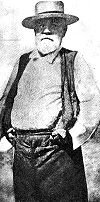
Living in San Antonio, Texas, Roy Bean wasn’t well suited to running a legitimate business. He sold firewood, but was cutting his neighbour’s timber. He tried to run a dairy business, but was caught watering down his product with creek water when minnows were found in the milk. He claimed to be just as surprised as the buyers, saying “I’ll have to stop them cows from drinking out of the creek”. He later worked as a butcher, rustling unbranded cattle from area ranchers.
At the age of 41, he married 18-year-old Virginia Chavez. Within a year he was arrested for aggravated assault and threatening his wife’s life, but they did have 4 children before they divorced. In 1882, Bean sold all of his belongings, bought ten barrels of whiskey, and left San Antonio to open a saloon in a tent near the railway construction camps in West Texas. Soon afterwards Bean was appointed Justice of the Peace for this area, a new precinct in Pecos County.
If his colourful history can be believed, Roy’s approach to life didn’t change much after he became an officer of the court. Roy shot up the tent saloon of a competitor. When threatened with a lynching by 200 angry Irish immigrants, he freed an Irishman who had killed a Chinese labourer ruling that, “homicide was the killing of a human being; however, he could find no law against killing a Chinaman”.
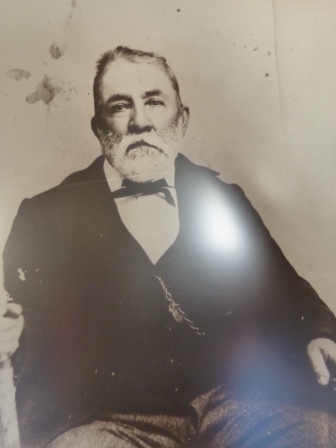
Following the railway construction as it moved, Roy relocated his saloon to a place called Eagles Nest, in a desolate area of the Chihuahuan desert, and squatted on the railroad right-of-way for the next 20 years. He renamed his saloon ‘The Jersey Lily’ in honour of his idol, actress Lily Langtry. In fact, he later renamed the whole town, such as it was, ‘Langtry’, a name that continues to this day.
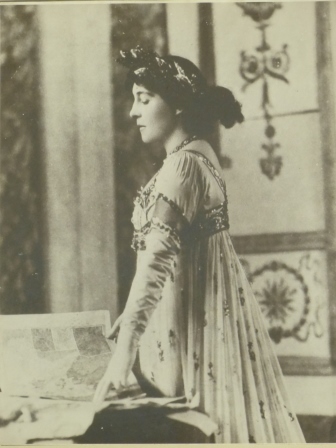
When business was slow, Roy would stand on the porch of his saloon and ‘attract’ customers at gunpoint. An owner of a local restaurant owned Bean money and when he didn’t pay, Bean stood by the restaurant door and had each customer pay him for their meal, with the last few customers paying the interest he was owed.
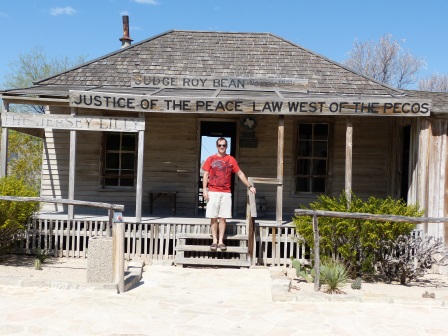
As the only judge in West Texas, Roy Bean was known for his unusual version of jurisprudence. Roy had no legal training and only 1 law book that was more of a prop than a basis for his decisions. He meted out a kind of down-home, folksy justice that became the stuff of Old West legend
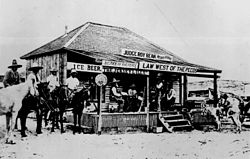
Court was conducted inside Roy’s saloon or on the front porch when the weather was hot. Jurors were drawn from the bar patrons. Roy used a Cold .45 as a gavel. Langtry did not have a jail, so men were commonly chained up in front of the saloon until they sobered up, and all court cases were settled by fines, which Judge Bean kept, rather than remitting them to the state. In most cases, the fines were made for the exact amount in the accused’s pockets. He never gave change. Often his sentences required buying drinks for those present, including the bear.Bean has often been confused with ‘hanging judge’ Parker of Fort Smith, perhaps because of their slightly unorthodox or creative sentencing. Bean never actually hanged anyone, although he twice ‘staged’ hangings to scare criminals straight.
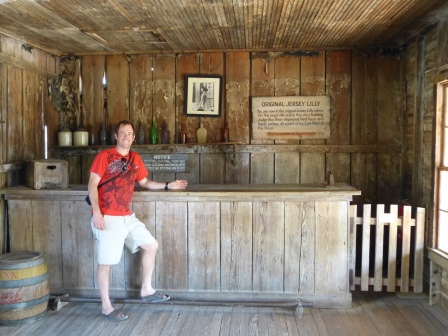
Bean conducted marriages for $5. Although he wasn’t legally entitled to, he also granted divorces for $10, and told his superiors that if he could marry people, he needed to be able to fix his mistakes. Roy Bean continued to try cases even after he lost his official position as a Justice.
In 1896, Bean organized a world championship boxing title fight between Bob Fitzsimmons and Peter Maher. Because boxing matches were illegal in both Texas and Mexico, Bean staged the fight on a sand bar in the middle of the Rio Grande river that separates the two. The fight lasted only 1 minute 35 seconds, but reports of the bout spread his fame throughout the United States

Bean enjoyed his tough reputation (probably vital to one’s health in those days), and he kept his softer side hidden. Over the years in Langtry, he took some of his courtroom fines and many of the collected goods and gave them to the poor in the area, without telling others.
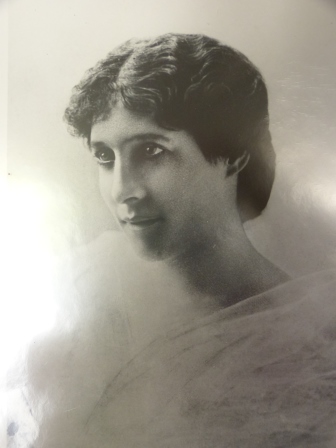
Judge Roy Bean had an obsession with British socialite and actress Lily Langtry, born Emilie Charlotte Le Breton on Jersey, one of the English Channel Islands located close to the coast of France. She was known as ‘The Jersey Lily’. She was a friend of Oscar Wilde and mistress of many wealthy and powerful men including the Prince of Wales. She first toured American in 1882, and although she received mixed reviews from the critics, the public loved her, including Judge Roy Bean. In addition to naming his town Langtry and saloon The Jersey Lily, he also named his small home behind the saloon ‘The Opera House’ in the hopes that she might come and perform there someday. Despite his many letters to her, Roy’s dream girl didn’t make it to Langtry in time. The Jersey Lily arrived in Langtry only 1 month after Roy Bean’s death in 1903.
Love the historical blogs! Great photos too 🙂
Nice one patrick, we’re in Jersery in two weeks I think I’ll look her up and maybe blog it, if I don’t spent too much time bellying up in le bars.
That would be great! You can find information about her early life and funeral/burial on Jersey on Wikipedia. http://en.wikipedia.org/wiki/Lillie_Langtry